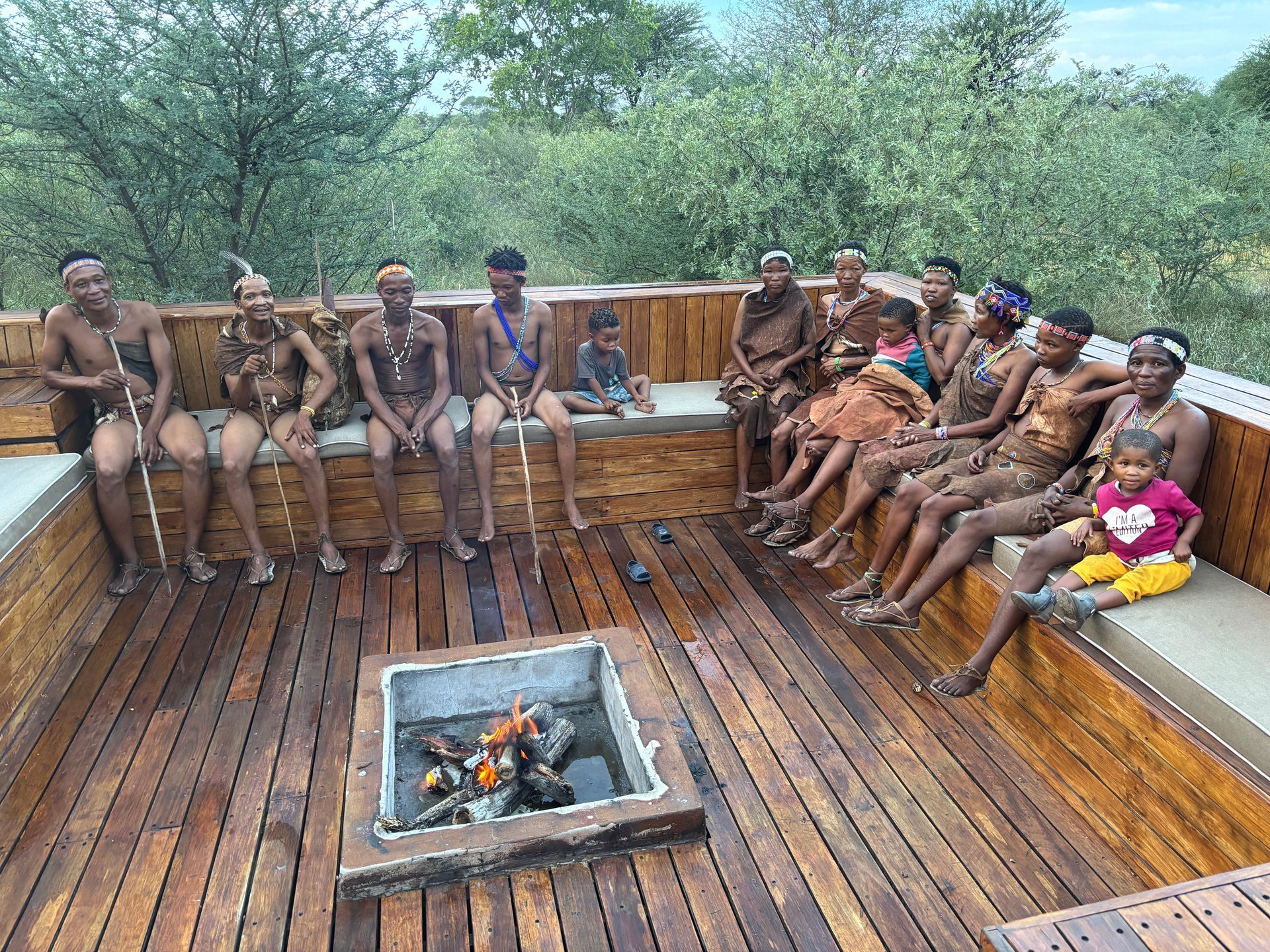The San Bushmen - an enduring presence
For Africa's First People the Kalahari is home
Life in the Kalahari is measured by the slow passage of the sun across endless skies, by the wind in the scrub and the low hum of insects that never seem to rest. For tens of thousands of years, this semi-arid land has shaped the people who call it home. The San Bushmen are perhaps the most enduring presence, their culture entwined with the rhythms of the plains, the sparse trees, and the hidden waterholes that sustain life in this vast, open scrubland...
In the north-western Kalahari, around the area of Feline Fields Lodge, the Ju/'hoansi represent a vibrant, living heritage – a true First People whose knowledge of the land, its flora and fauna, and its seasons is unparalleled.
The San are extraordinary because they have mastered the art of living lightly on the land. Their knowledge is encoded in the tracks of animals, the timing of seasonal blooms, the subtle signs of shifting weather. Every footstep across sand and grass tells a story; every plant has purpose, whether for medicine, nutrition, or ritual. It is a culture built on observation, patience, and an intimate understanding of the landscape that outsiders often overlook.
They are master trackers, following the subtle impressions left by animals in soil and sand. They know which grasses indicate the presence of water beneath the surface, which trees yield edible nuts or tubers, and how to gather plants without exhausting their source. Their expertise is quiet, meticulous, almost invisible and yet it's the key to survival in an environment where resources are scattered and the climate can be harsh.
Storytelling and art are central to San life, forming a bridge between past and present. Rock engravings and paintings, some tens of thousands of years old, are found across the Kalahari, depicting hunters, animals, and spiritual figures. These images are not merely decorative; they are a language, a record of what was observed, what mattered, and what could be passed to future generations.
The rhythms of the wilderness, the patterns of stars in the night sky, and the migration of animals are all reflected in these silent yet expressive marks.
Music and dance also carry meaning far beyond entertainment. Clapping hands, drumming on the earth, and the low hum of voices form intricate patterns that accompany storytelling, ritual, and communal gatherings. These are not performances staged for visitors; they are living traditions, continuing practices that have endured because they are functional, spiritual, and deeply connected to the land itself.
The San worldview is rooted in respect for the land, for the animals, and for each other. Decisions are made collectively, informed by centuries of accumulated knowledge. Their practices exemplify a sustainable, non-intrusive relationship with the environment, one that has persisted despite centuries of external pressures.
Even today, walking in the north-western Kalahari with a Ju/'hoansi guide is less about ticking off sights and more about noticing what might otherwise go unseen. Tiny spoor in the sand, the sudden burst of a hornbill, the delicate flower of a wild grass... These are the cues that reveal the life of the land. The Ju/'hoansi see patterns in these details that outsiders might miss entirely. Their connection is not flashy; it is patient, quiet, and constant, and it teaches visitors a different way of seeing the world.
In a landscape often thought of as barren, the San demonstrate that richness is not measured by abundance alone. It is in the subtle interplay of life, the careful balance between taking and giving back, and the depth of understanding that comes from generations living in harmony with place.
To spend time learning from the Ju/'hoansi is to understand that culture and landscape are inseparable here, and that endurance, observation, and respect are as vital to life as water itself.
The Kalahari may appear still, open, and unchanging to the casual eye, but through the eyes of the Ju/'hoansi it is alive with history, knowledge, and subtle energy. Their culture reminds us that the ordinary can hold extraordinary meaning when seen with attention and care.
In this way, the ancient traditions of the San at Feline Fields Lodge are not relics of a distant past, but a living, breathing testament to the intelligence and resilience of people attuned to the rhythms of one of Africa’s most challenging landscapes.









